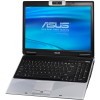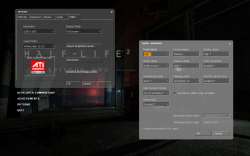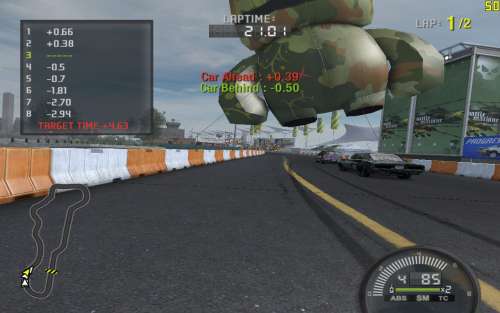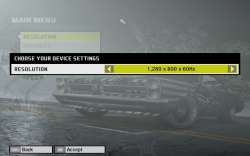- Qualcomm Launches Snapdragon 4 Gen 2 Mobile Platform
- AMD Launches Ryzen PRO 7000 Series Mobile & Desktop Platform
- Intel Launches Sleek Single-Slot Arc Pro A60 Workstation Graphics Card
- NVIDIA Announces Latest Ada Lovelace Additions: GeForce RTX 4060 Ti & RTX 4060
- Maxon Redshift With AMD Radeon GPU Rendering Support Now Available
ASUS M51S 15.4″ Notebook

Have a $1,000 budget for a new notebook? Look no further than the ASUS M51S. Touted as a multi-media notebook, it offers a 15.4" screen, 250GB HD and 3GB of RAM. Included also are 4 USB ports, DVI and VGA outputs, full numpad, fingerprint reader, a face-detection logon system and more.
Page 4 – Battery Life, Performance & Gaming Tests
Our testing methodology for notebooks is rather simple. Depending on whether it’s high or low-end offering, we choose our benchmarks and tests accordingly. If a notebook is designed for business, for example, we don’t run games on it (unless it has a capable GPU that hints that gaming should be done). Most of our benchmarks are real-world, but we do use SYSmark 2007 Preview and PCMark Vantage for synthetic system-wide performance analysis.
We currently have no basis for comparison performance-wise, since we haven’t published a notebook review in a little while (that will change), so I apologize for delivering results that might not mean too much right now. If you have a notebook and are thinking of upgrading, you could use these for comparison that way.
In the table below, we list all of the tests we conducted. “EFS” in our DivX test represents “Experimental Full Search”, which is an advanced algorithm that thrives on the SSE4 instruction set. Once we have a notebook in with a Penryn CPU, we’ll be able to see the benefits there.
|
Benchmark
|
Results
|
| SYSmark 2007 Preview E-Learning VideoCreation Productivity 3D Overall |
86 93 100 93 93 |
| PCMark Vantage PCMark Suite Memories TV and Movies Music Communications Productivity |
2898 1911 2070 2879 2558 2249 |
| VirtualDub + DivX 6.7 Encode 720p Video w/o EFS Encode 720p Video w/ EFS (SSE2) |
291 s 512s |
| Adobe Lightroom Convert 100 RAW to JPEG |
448 s |
| Autodesk 3DS Max 9 1080p Single-Frame Render |
128s |
| HD Tach RW/3 Burst MB/s Average MB/s Latency |
196.8MB/s 50.6MB/s 16.2ms |
| Futuremark 3DMark 06 1024×768 Overall Score 1280×1024 Overall Score |
4123 3704 |
The results are not jaw-dropping, but given the price-range and CPU used, I didn’t expect anything else. Having a faster CPU would make a large difference in almost all of these tests. As mentioned earlier, the newer revision of this notebook contains a processor that’s 170MHz faster, so all of these results would be heightened a bit had I been given that revision for review.
Battery-Life
As we would expect, the M51S does not excel with superb battery-life. With the help of MobileMark’s productivity suite, we calculated that during regular work use, the notebook will last upwards of 1h 49m before dying. That’s assuming that you turn the notebook off at the 5% battery-life remaining mark.
Watching a DVD shows even worse performance, with a manual test of playback lasting us 1h 26m. Not impressive, but again, not unexpected. Even higher-end notebooks don’t improve on battery-life too much.
Gaming Performance
Because notebooks come in a wide variety of shapes and sizes, we don’t benchmark games in the traditional sense, as we would with an actual gaming PC review or a review of a desktop graphics card. So, we don’t report our average FPS, either. Instead, we load up four different titles and play through a selected intensive level and adjust the settings until we find one that makes the game fully playable (no lagging or outright stalls).
Our immediate goal is to run the game at the notebooks native resolution, and if we have to, then we’ll lower it in order to make a game playable. Most often, though, games can run at native resolutions with weaker texture settings, which we prefer over lowering the resolution. Non-native resolutions do not look good on LCD panels.
Below are reports from the four games tested, with both the actual screenshots of the settings used, and also a direct screenshot from the game to show the detail of those chosen settings.
Each gameplay screenshot has an FPS counter from FRAPS in the upper right-hand corner, which represents the FPS we saw at that exact moment, which might give you an idea of overall performance. We don’t recommend judging real performance by that number, however, since 20FPS might be playable in one game, but not in another. So with that said, none of these settings were “barely” playable. All of them were 100% playable without any real lag.
Crysis
Half-Life 2: Episode Two
Unreal Tournament III
Need for Speed: Pro Street
When looking over the notebook specs, I didn’t expect to see much in way of gaming performance, but I was wrong to doubt the NVIDIA 9500M GS. Each game tested ran well, and looked good, all at the same time.
I am impressed by the gaming performance of the M51S. We might be dealing with a small resolution (1280×800) and had to keep moderate texture settings, but in the end, the games looked good (they actually seem to look better on the notebook itself than the screenshots prove) and performed well.
What impressed me the most, however, was that even after longer periods of playtime, there was not a single hint of lag during any part of the gameplay, not once. The notebook has some great airflow, because most notebooks tend to overheat when their GPUs are put to good use.
That said, let’s get right in my final thoughts on the next page.
|
|
Support our efforts! With ad revenue at an all-time low for written websites, we're relying more than ever on reader support to help us continue putting so much effort into this type of content. You can support us by becoming a Patron, or by using our Amazon shopping affiliate links listed through our articles. Thanks for your support!
















